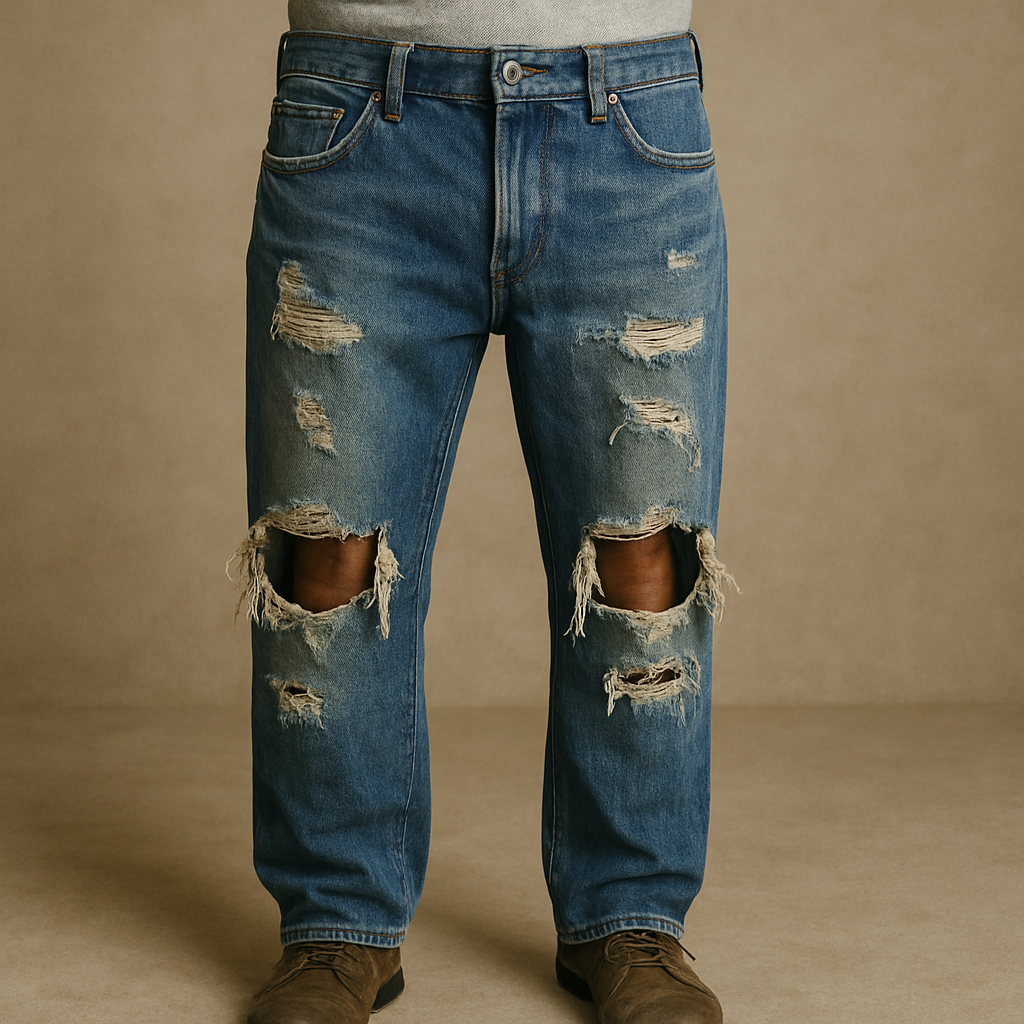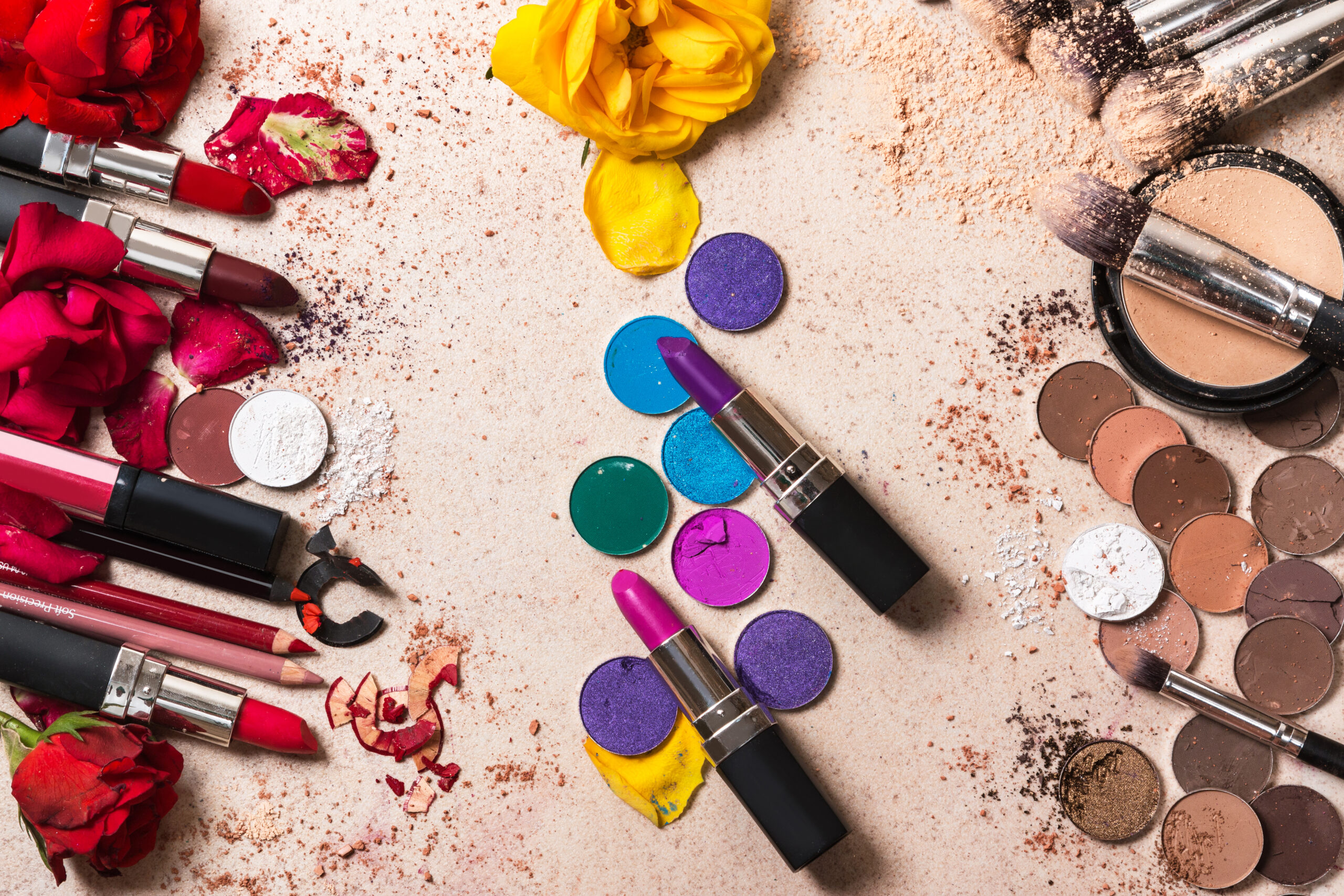Today, we’re exploring what we put ON our bodies, actually slather and wear—not what we eat. We’re diving into a quiet conspiracy of toxins that cling to our skin via cosmetics and fashion. Let’s explore what we seem all too readily to welcome into our aura.
I know you know just how much emphasis I put on toxic foods (Bandit Foods). But health issues and toxins are not confined to that.
What we subject our skin to is just as bad; maybe more so! I’ll run you through the obvious toxins in cosmetics and skin “care” products. But then I’m sure you’ll be even more startled by what toxins we actually WEAR (clothes and fashion). Here Vivien actually stepped in a few years back and told me about the dangers of denim. She had been taken to dinner by her supplier in Turkey, and his friend, an Egyptian fabric dealer.
Egypt, of course, is known for pure cottons. But changing fashions had forced them into dealing in denim and it made the dealer really ill. She learned that the more “distressed” the denim, with chemicals and acids, the more ill he had become handling it, until he eventually had to quit.
I was shocked. Who’d have thought that denim was bad for your health?
I seem to remember I did write briefly about this some years ago but
1. I can’t remember where
2. It’s something that bears repeating many times, like the Highway Code.
WHAT YOU WEAR CAN DAMAGE YOUR HEALTH!
1. Heavy Metals
Lipsticks, foundations, and eye shadows can be contaminated with lead, mercury, cadmium, nickel, and chromium—these metals may accumulate, provoke inflammation, hasten aging, and even contribute to cancer and organ damage.1
2. Endocrine Disruptors and Reproductive Toxins
Parabens and phthalates mimic hormones, affecting reproductive systems, possibly lowering IQ, and raising risks of cancer. It is especially important that we safeguard our pregnant ladies from this hazard but nobody even seems to know about it.2.
3. Formaldehyde and Releasers
Found in formaldehyde and its releasers—Quaternium-15, DMDM hydantoin, and more (look ’em up if you’re interested) can cause allergic contact dermatitis and have carcinogenic potential. A formaldehyde releaser is a substance that slowly releases formaldehyde, whether intentionally made to do so our not. These substances are used to prevent microbial growth and extend shelf life. They are found in shampoos, conditioners, hair straightening products, nail polish and other toiletries.3
4. The “Toxic Trio” in Salon Products
Many chemicals in salon products pose potential health risks. Examples of hazardous chemicals found in common treatments (e.g. hair coloring, straightening, perms, relaxers, keratin treatments, Brazilian Blowouts, and nail treatments) include dibutyl phthalate, formaldehyde, lye (sodium hydroxide), ammonia, and coal tar. Allergies and dermatitis have forced approximately 20% of hairdressers to stop practicing their profession.4
Hair stylists hover over an industrial cocktail: formaldehyde, toluene (a solvent), and dibutyl phthalate (DBP). Found in hair straighteners, dyes, nail polish and removers, each of the trio independently hurts reproductive health.5
5. Nanoparticles
Don’t get me started on this. They are everywhere, including in health supplements. But there are absolutely NO studies establishing the safety of nano particles in our bodies. None.
Some sunscreens and creams use nanoparticles like titanium dioxide (TiO?) and zinc oxide (ZnO). While ZnO is regarded as generally safe, TiO? dust has been classified as a possible carcinogen in high-exposure contexts. But just to make the point: it’s the nano particle angle that troubles me, not what the chemical is.6
6. Talc, Fragrance, Contaminants
Talc may carry asbestos. All kinds of “fragrances” hide behind commercial secrecy layers. But they often trigger irritation; contaminants like aluminum, lead, sulfates—context matters, but personal sensitivity and longevity of use seem to matter more.7
Over 4 Pounds A Year!
And ladies, it bears repeating many times: the average woman absorbs approximately 4.4 pounds (weight) of cosmetic substances per year. That’s equivalent to over 2 teaspoonsful per day! Surprised? Don’t be. The skin isn’t as much of a barrier as you might think! Why do you suppose nicotine and estrogen patches work? The chemical goes straight through the skin, into the body!8
Fabrics
Anyway, let’s move into the topic that I most wanted to share with you… toxins in clothing and textile treatments. The same problem of absorption through the skin applies, of course.
I learned from Vivien (who was a brilliant fashion designer in her time, by the way), that the fashion industry is among the worst polluters in the environment. I looked up some figures… Textile production alone is responsible for approximately 20% of global clean water pollution due to dyeing and finishing processes and contributes substantially to global wastewater pollution. Additionally, the industry accounts for 35% of oceanic primary microplastics, equivalent to approximately 190,000 tons annually.
Did you know that fashion production is also a major contributor to greenhouse gas emissions, responsible for 8 – 10% of global CO? emissions? Ladies, this is a heavy price to pay for your elegant good looks!
Emissions from textile manufacturing are projected to increase by 60% by 2030. Moreover, the industry generates an estimated 92 million tons of textile waste per year, a figure expected to rise to 134 million tons annually by 2030. So-called fast fashion production also involves the extensive use of hazardous chemicals, accounting for a quarter of the world’s toxic chemical consumption. For instance, dyeing just 1 kg of textile material requires an average of 449 g of chemicals
Although the global environmental consequences of fast fashion have been widely acknowledged by international organizations such as the United Nations and the European Union, the discussions surrounding the impact of its processes on human health remain largely overlooked.
A key consequence of the fashion industry’s secretive supply chains is the widespread exposure of workers to hazardous chemicals at multiple stages of production. In cotton fields, laborers regularly encounter pesticides and herbicides, often suffering from acute poisoning, chronic illnesses, and long-term environmental harm.
Factory workers who process textiles face similar dangers, handling synthetic dyes, formaldehyde, and flame retardants that can lead to respiratory issues, skin irritation, and even cancer. In garment assembly plants, finishing treatments involving phthalates and nonylphenol ethoxylates (NPEs) further expose workers to toxic substances. These chemicals do not disappear after production; they remain embedded in the fabrics, posing ongoing health risks to consumers through skin contact.
That mean YOU are exposed to exactly the same hazards, I daresay without realizing it.
Toxic chemicals permeate every stage of fabric production, from the moment a cotton seed is planted to the final touches on a garment. Although cotton crops cover only 2.4% of the world’s cultivated land, they account for 6% of global pesticide use. That’s more than any other crop!
In addition to pesticides, synthetic dyes and finishing agents introduce hazardous substances into textiles, such as azo dyes, a class of synthetic nitrogen-based dyes, which can degrade into mutagenic amines once they meet sweat or bacteria. They’re whispering carcinogens.
While finishing treatments often include formaldehyde, NPEs, phthalates, alkanes, benzyl benzoate, benzophenone, biphenyl compounds, butylated hydroxytoluene (BHT), and other chemicals. These substances introduce assets such as wrinkle resistance and flame retardancy, while also reducing production costs, but have an enormous impact on our environment AND PERSONAL HEALTH.
As fast fashion becomes increasingly rapid in production and distribution cycles, toxic chemicals are infiltrating wardrobes worldwide, posing risks to both consumers and garment workers. A striking example is the recent safety tests conducted by South Korean authorities in May 2024, which revealed that children’s products from the company SHEIN contained dangerously high levels of toxic chemicals used to soften plastics. These included phthalates, which are known to cause hormonal disruptions, heart disease, fertility issues, and even cancer. One pair of shoes tested contained 428-times the permitted level of phthalates, the highest concentration ever recorded in the Seoul tests, while three handbags contained 153-times the legal limit.
Similar safety tests of products from Temu and AliExpress showed that 43% of the 90 children’s products examined, including watches, clay sets, toys, and pencils, contained hazardous substances at unacceptable levels.
Of course children often chew on pencils and put toys in their mouth. You’ll see, it’s a big problem.9
Synthetic Fabric Underwear Can Make You Infertile!
Finally, just days after I wrote this piece on my birthday cruise, another pearl dropped into my lap, this time from Sayer Ji at GreenMedInfo: Emerging research suggests that the very fabric touching your most sensitive areas might be acting as an accidental contraceptive. From Nobel Prize-winning scientist Dr. Ahmed Shafik’s experiments rendering men temporarily sterile with polyester underwear to modern discoveries of hormone-disrupting chemicals in yoga pants, the evidence is mounting: synthetic fabrics can cause sterility!
OK, startled? I hope so!
All the best,
Prof. Keith Scott-Mumby
The Official Alternative Doctor
References:
- https://thegoodinside.com/toxic-cosmetics
- Front Public Health. 2024 Aug 26;12:1439027. doi: 10.3389/fpubh.2024.1439027
- https://en.wikipedia.org/wiki/Formaldehyde_releaser
- “Archived copy”. Archived from the original on 2011-09-29. Retrieved 2011-05-15. [https://www.sciencedirect.com/science/article/abs/pii/S0278691515001209?via%3Dihub]
- https://en.wikipedia.org/wiki/Cosmetology
- https://en.wikipedia.org/wiki/Nanotechnology_in_cosmetics
- https://www.self.com/story/controversial-cosmetics-ingredients-research
- https://www.sunmark.org/connect/sunmark-360/average-woman-absorbs-44-pounds-chemicals-every-year-makeup
- https://www.lemonde.fr/en/economy/article/2024/05/28/seoul-government-finds-shein-products-contain-high-levels-of-toxic-chemicals_6672910_19.html#






